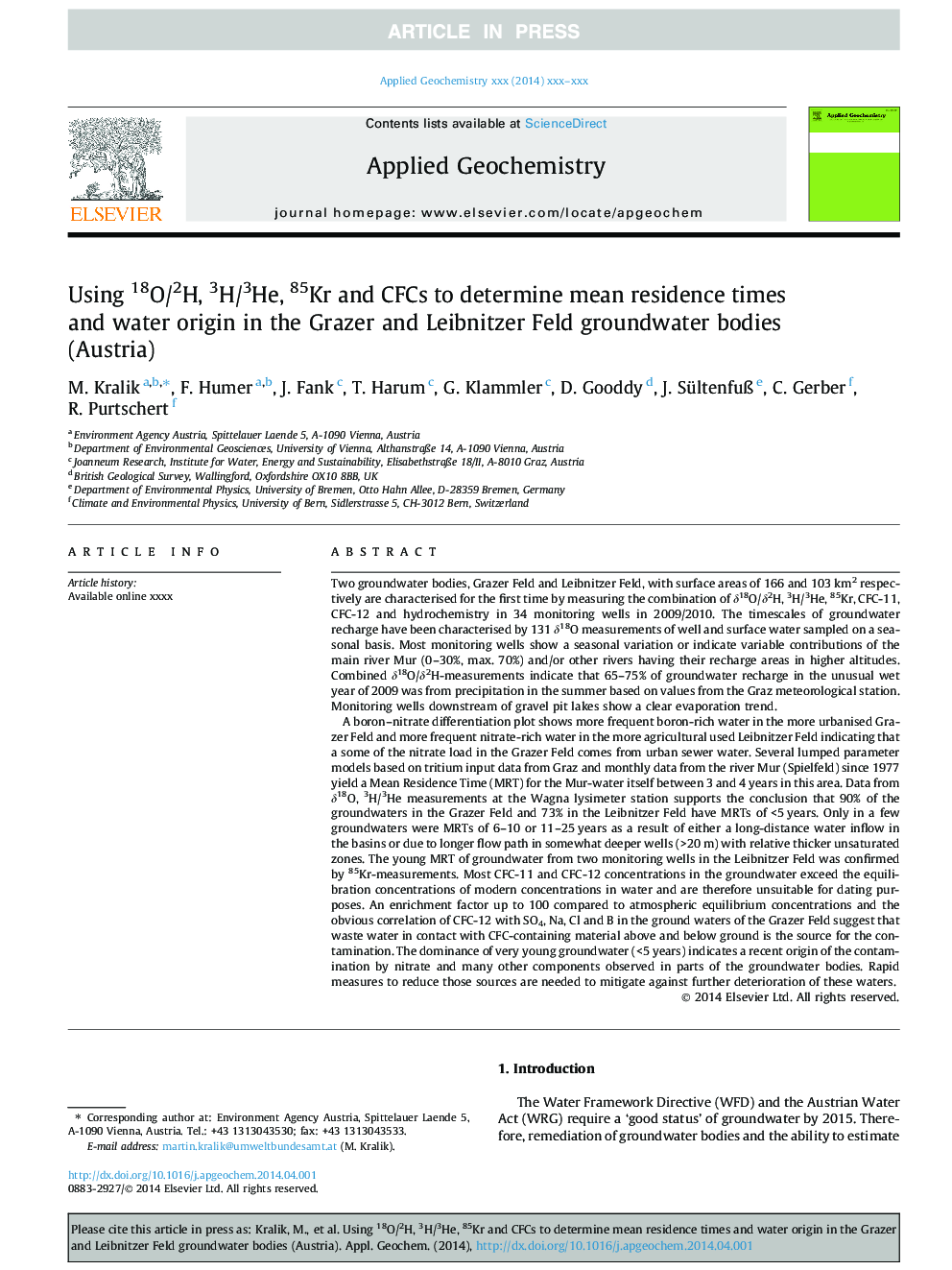| کد مقاله | کد نشریه | سال انتشار | مقاله انگلیسی | نسخه تمام متن |
|---|---|---|---|---|
| 6335137 | 1620241 | 2014 | 14 صفحه PDF | دانلود رایگان |
عنوان انگلیسی مقاله ISI
Using 18O/2H, 3H/3He, 85Kr and CFCs to determine mean residence times and water origin in the Grazer and Leibnitzer Feld groundwater bodies (Austria)
دانلود مقاله + سفارش ترجمه
دانلود مقاله ISI انگلیسی
رایگان برای ایرانیان
موضوعات مرتبط
مهندسی و علوم پایه
علوم زمین و سیارات
ژئوشیمی و پترولوژی
پیش نمایش صفحه اول مقاله

چکیده انگلیسی
A boron-nitrate differentiation plot shows more frequent boron-rich water in the more urbanised Grazer Feld and more frequent nitrate-rich water in the more agricultural used Leibnitzer Feld indicating that a some of the nitrate load in the Grazer Feld comes from urban sewer water. Several lumped parameter models based on tritium input data from Graz and monthly data from the river Mur (Spielfeld) since 1977 yield a Mean Residence Time (MRT) for the Mur-water itself between 3 and 4 years in this area. Data from δ18O, 3H/3He measurements at the Wagna lysimeter station supports the conclusion that 90% of the groundwaters in the Grazer Feld and 73% in the Leibnitzer Feld have MRTs of <5 years. Only in a few groundwaters were MRTs of 6-10 or 11-25 years as a result of either a long-distance water inflow in the basins or due to longer flow path in somewhat deeper wells (>20 m) with relative thicker unsaturated zones. The young MRT of groundwater from two monitoring wells in the Leibnitzer Feld was confirmed by 85Kr-measurements. Most CFC-11 and CFC-12 concentrations in the groundwater exceed the equilibration concentrations of modern concentrations in water and are therefore unsuitable for dating purposes. An enrichment factor up to 100 compared to atmospheric equilibrium concentrations and the obvious correlation of CFC-12 with SO4, Na, Cl and B in the ground waters of the Grazer Feld suggest that waste water in contact with CFC-containing material above and below ground is the source for the contamination. The dominance of very young groundwater (<5 years) indicates a recent origin of the contamination by nitrate and many other components observed in parts of the groundwater bodies. Rapid measures to reduce those sources are needed to mitigate against further deterioration of these waters.
ناشر
Database: Elsevier - ScienceDirect (ساینس دایرکت)
Journal: Applied Geochemistry - Volume 50, November 2014, Pages 150-163
Journal: Applied Geochemistry - Volume 50, November 2014, Pages 150-163
نویسندگان
M. Kralik, F. Humer, J. Fank, T. Harum, G. Klammler, D. Gooddy, J. SültenfuÃ, C. Gerber, R. Purtschert,